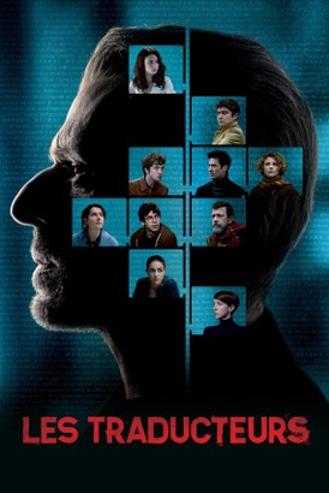 Το πρόγραμμα Erasmus για Νέους Επιχειρηματίες είναι ένα πρόγραμμα διασυνοριακής ανταλλαγής που ξεκίνησε το 2009 με πρωτοβουλία της Ευρωπαϊκής Επιτροπής και το οποίο προσφέρει σε νέους ή φιλόδοξους επιχειρηματίες την ευκαιρία να αποκομίσουν γνώσεις από έμπειρους επιχειρηματίες οι οποίοι διευθύνουν μικρές επιχειρήσεις σε κάποια από τις συμμετέχουσες στο πρόγραμμα χώρες. Η ανταλλαγή εμπειριών πραγματοποιείται κατά τη διάρκεια της παραμονής (1-6 μήνες) κοντά σε έναν έμπειρο επιχειρηματία άλλης χώρας (επιχειρηματίας υποδοχής), ενώ ο νέος επιχειρηματίας χρηματοδοτείται εξ ολοκλήρου από την Ευρωπαϊκή Επιτροπή.
Το πρόγραμμα Erasmus για Νέους Επιχειρηματίες είναι ένα πρόγραμμα διασυνοριακής ανταλλαγής που ξεκίνησε το 2009 με πρωτοβουλία της Ευρωπαϊκής Επιτροπής και το οποίο προσφέρει σε νέους ή φιλόδοξους επιχειρηματίες την ευκαιρία να αποκομίσουν γνώσεις από έμπειρους επιχειρηματίες οι οποίοι διευθύνουν μικρές επιχειρήσεις σε κάποια από τις συμμετέχουσες στο πρόγραμμα χώρες. Η ανταλλαγή εμπειριών πραγματοποιείται κατά τη διάρκεια της παραμονής (1-6 μήνες) κοντά σε έναν έμπειρο επιχειρηματία άλλης χώρας (επιχειρηματίας υποδοχής), ενώ ο νέος επιχειρηματίας χρηματοδοτείται εξ ολοκλήρου από την Ευρωπαϊκή Επιτροπή.
Από το πρόγραμμα μπορούν να επωφεληθούν νέοι και παλαιότεροι ελεύθεροι επαγγελματίες, ανεξαρτήτως ηλικίας, μεταφραστικά γραφεία, καθώς και νέοι που σκοπεύουν να ξεκινήσουν τη δική τους επιχειρηματική δραστηριότητα σε κάποιο γλωσσικό επάγγελμα. Οι επιλέξιμοι συνάδελφοι θα αποκομίσουν πολύτιμες γνώσεις μέσω την συνεργασίας τους με άτομα από άλλες χώρες ενώ θα ενισχυθεί η εξωστρέφεια της επιχείρησής τους ανοίγοντας το δρόμο και για νέες συνεργασίες εκτός Ελλάδος. Αξίζει να σημειωθεί ότι η συνεργασία μπορεί να περιλαμβάνει και διαφορετικούς κλάδους. Για παράδειγμα, ένας ιδιοκτήτης μεταφραστικού γραφείου μπορεί να χρειάζεται βοήθεια με την προβολή της επιχείρησής του στο εξωτερικό και έτσι να συνεργαστεί με κάποιον επιχειρηματία με υπόβαθρο στα μέσα κοινωνικής δικτύωσης.
Μπορείτε να συμμετάσχετε στο πρόγραμμα ως Νέοι Επιχειρηματίες (New Entrepreneurs), εάν:
- Σχεδιάζετε να ξεκινήσετε μία επιχείρηση βάσει ενός βιώσιμου επιχειρηματικού σχεδίου.
- Έχετε ξεκινήσει τη δική σας επιχείρηση εντός της τελευταίας τριετίας.
Οι συνάδελφοι που δραστηριοποιούνται επιχειρηματικά για περισσότερα από 3 χρόνια μπορούν να λάβουν μέρος στο πρόγραμμα ως έμπειροι επιχειρηματίες (Οικοδεσπότες Επιχειρηματίες) και να φιλοξενήσουν στην επιχείρησή τους κάποιον νέο επιχειρηματιά άλλης Ευρωπαϊκής χώρας. Βασική προϋπόθεση σε αυτή την περίπτωση είναι η επιχείρηση του έμπειρου επιχειρηματία να διαθέτει γραφεία.
Μπορείτε να συμμετάσχετε στο πρόγραμμα ως Οικοδεσπότες Eπιχειρηματίες Yποδοχής (Host Entrepreneurs) εάν:
- Είστε μόνιμοι κάτοικοι σε μια από τις χώρες που συμμετέχουν στο πρόγραμμα.
- Είστε ιδιοκτήτες-διευθυντές μίας μικρής ή μεσαίας επιχείρησης ή πρόσωπα που έχετε άμεση σχέση με την επιχειρηματικότητα σε επίπεδο διοικητικού συμβουλίου ΜΜΕ.
Πώς να υποβάλετε αίτηση συμμετοχής:
Επιλέξτε ένα σημείο επαφής στη χώρα διαμονής σας
Το πρόγραμμα συντονίζουν σε κάθε χώρα της ΕΕ ενδιάμεσοι φορείς που έχουν επιλεγεί από την Ευρωπαϊκή Επιτροπή και λειτουργούν ως τοπικά σημεία επαφής.
Το Πανεπιστήμιο Θεσσαλίας είναι ένα από τα τοπικά σημεία επαφής στην Ελλάδα για το πρόγραμμα Erasmus for Young Entrepreneurs.
Για περισσότερες πληροφορίες σχετικά με το πρόγραμμα επισκεφθείτε τον ιστότοπο: http://www.erasmus-entrepreneurs.eu/index.php?lan=el ή επικοινωνήστε με τον υπεύθυνο του προγράμματος κύριο Χαράλαμπο Σαμαντζή στη διεύθυνση: hasamant@uth.gr.



